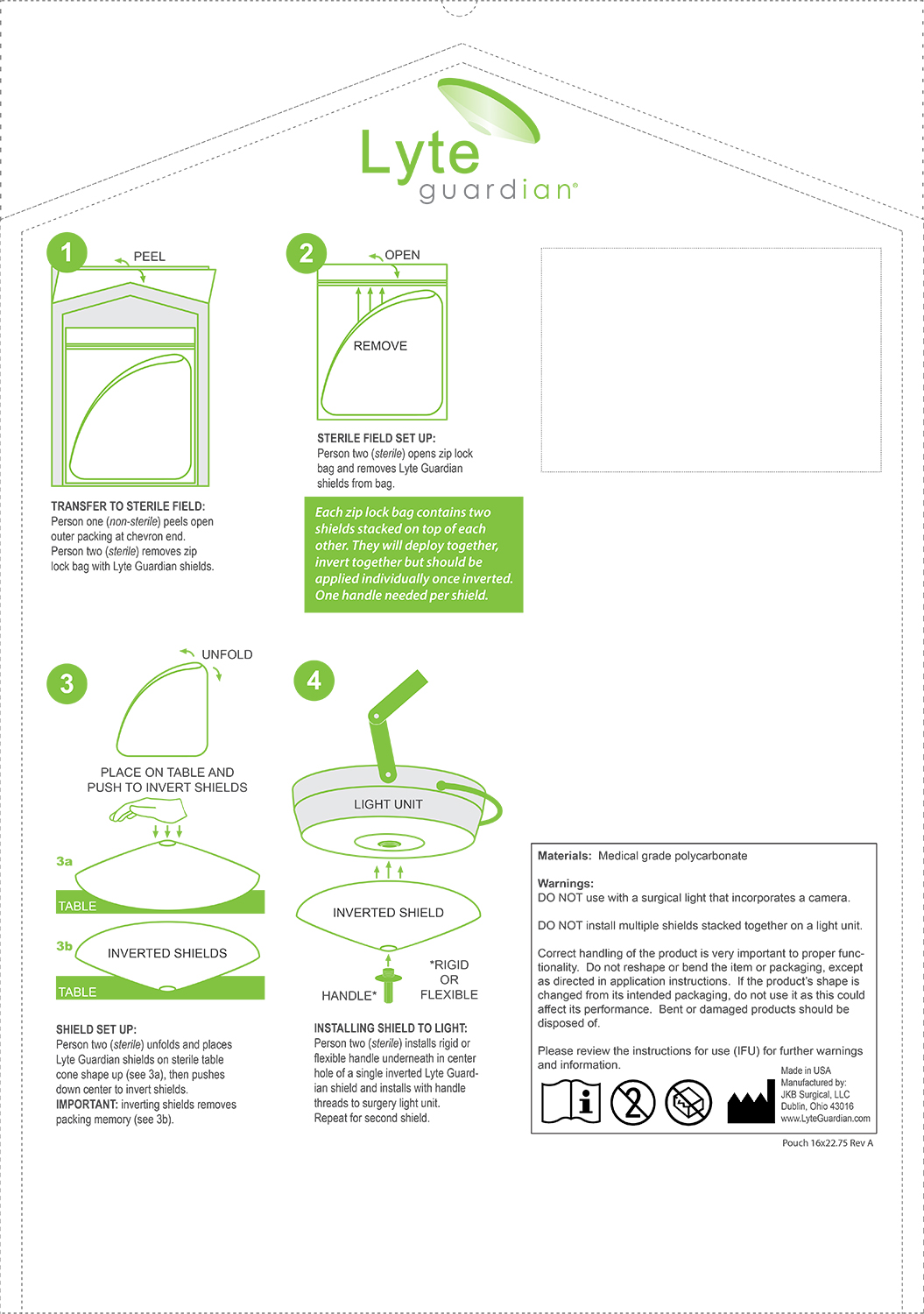Lyte Guardian –
The Surgical Site Solution
Product Specifications
Lyte Guardian was developed with patient safety in mind. As infection becomes increasingly concerning for patients undergoing procedures at a hospital or surgery center, investment in sterile protocols and infection prevention has become the #1 priority. Lyte Guardian helps drastically reduce sterile field contamination through intra-op protection, cross contamination reduction and dust/air particle reduction. This one-time use, sterile OR light shield is a quick, easy to use, affordable way to help ensure that patient safety and infection prevention efforts are the first priority at healthcare facilities. Lyte Guardian covers the non-sterile portion of the OR surgical light heads that sit directly above the patients surgical site. This sterile barrier protects against accidental contact from intra-op debris of fluid, bone, cement, and soft tissue that would otherwise contaminate the sterile field and increase the risk for infection. This protective shield also helps eliminate cross-contamination concerns from patient to patient when following surgeries performed in the same OR. Lastly, Lyte Guardian helps to reduce dust and air particle bacteria falling from the surgical light manipulation taking place during surgery.
If interested in ordering the Lyte Guardian, please contact a representative at (614) 465-6494.
Lyte Guardian – Easy to Use Steps
- Locate the chevron end of the Lyte Guardian package.
- From this end, have an OR staff member open the outer chevron Tyvek pouch and present the inner bag with contents to a sterile staff member in the sterile field. Be careful not to touch any of the inner bag material without use of sterile gloves
- When necessary and preferably prior to final positioning of patient, remove the inner two light shields from the ziplock poly bag. Be careful to not let shields deploy until ample table space is available.
- Open the shield to their full deployment shape and place onto a sterile table with the cone portion facing up toward the ceiling.
- Press on the inner circle cone portion and invert both the light shields. This takes the packaging memory from the plastic and provides stability and rigidity to apply to the OR surgical light.
- Take one shield and place the hospital provided sterile light handle over or through the inner hole starting from underneath the light shield.
- With one hand on the shield and one hand on the light handle, move toward the overhead surgical light and apply slowly, being careful not to touch any non sterile portion of the overhead light.
- For screw in rigid adapters, thread the handle on and screw clockwise until fully seated.
- For flexible adapters, slide over existing non-sterile handle.
When surgery is complete and field sterility is no longer needed, light shields can be removed in the opposite manner as applied and can be disposed of properly.

Lyte Guardian is focused on providing the best care and customer service for its clients. Please call (614)465-6494 or email info@LyteGuardian.com to express any concerns with product performance and inquire about our performance guarantee.
Lyte Guardian is the future step in SURGICAL CONSCIENCE.
Lyte Guardian tackles the concern over sterile field contamination, which is important to all members of the operating room. The surgeon and hospital have a greater responsibility as they can be held liable for errors made in patient safety that could lead to poor or fatal outcomes. A simple step to cover the surgical light above can prevent contamination and help be a vital part of the ultimate goal of reducing HAI and improving patient outcomes.


